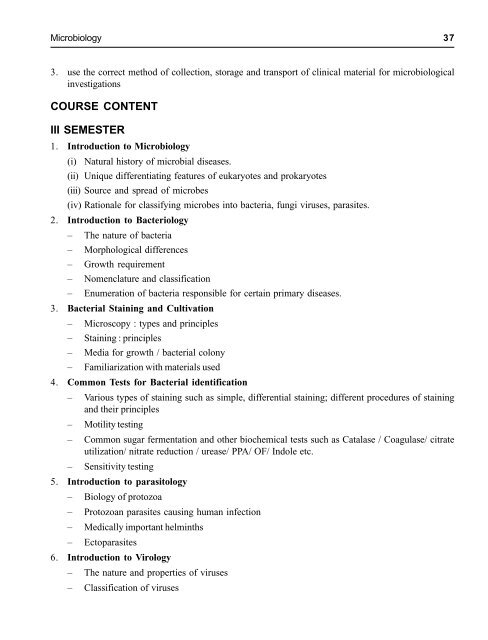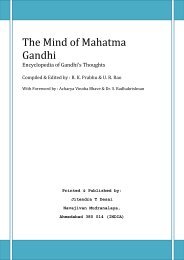Syllabus - MBBS
You also want an ePaper? Increase the reach of your titles
YUMPU automatically turns print PDFs into web optimized ePapers that Google loves.
Microbiology 37<br />
3. use the correct method of collection, storage and transport of clinical material for microbiological<br />
investigations<br />
COURSE CONTENT<br />
III SEMESTER<br />
1. Introduction to Microbiology<br />
(i) Natural history of microbial diseases.<br />
(ii) Unique differentiating features of eukaryotes and prokaryotes<br />
(iii) Source and spread of microbes<br />
(iv) Rationale for classifying microbes into bacteria, fungi viruses, parasites.<br />
2. Introduction to Bacteriology<br />
– The nature of bacteria<br />
– Morphological differences<br />
– Growth requirement<br />
– Nomenclature and classification<br />
– Enumeration of bacteria responsible for certain primary diseases.<br />
3. Bacterial Staining and Cultivation<br />
– Microscopy : types and principles<br />
– Staining : principles<br />
– Media for growth / bacterial colony<br />
– Familiarization with materials used<br />
4. Common Tests for Bacterial identification<br />
– Various types of staining such as simple, differential staining; different procedures of staining<br />
and their principles<br />
– Motility testing<br />
– Common sugar fermentation and other biochemical tests such as Catalase / Coagulase/ citrate<br />
utilization/ nitrate reduction / urease/ PPA/ OF/ Indole etc.<br />
– Sensitivity testing<br />
5. Introduction to parasitology<br />
– Biology of protozoa<br />
– Protozoan parasites causing human infection<br />
– Medically important helminths<br />
– Ectoparasites<br />
6. Introduction to Virology<br />
– The nature and properties of viruses<br />
– Classification of viruses



